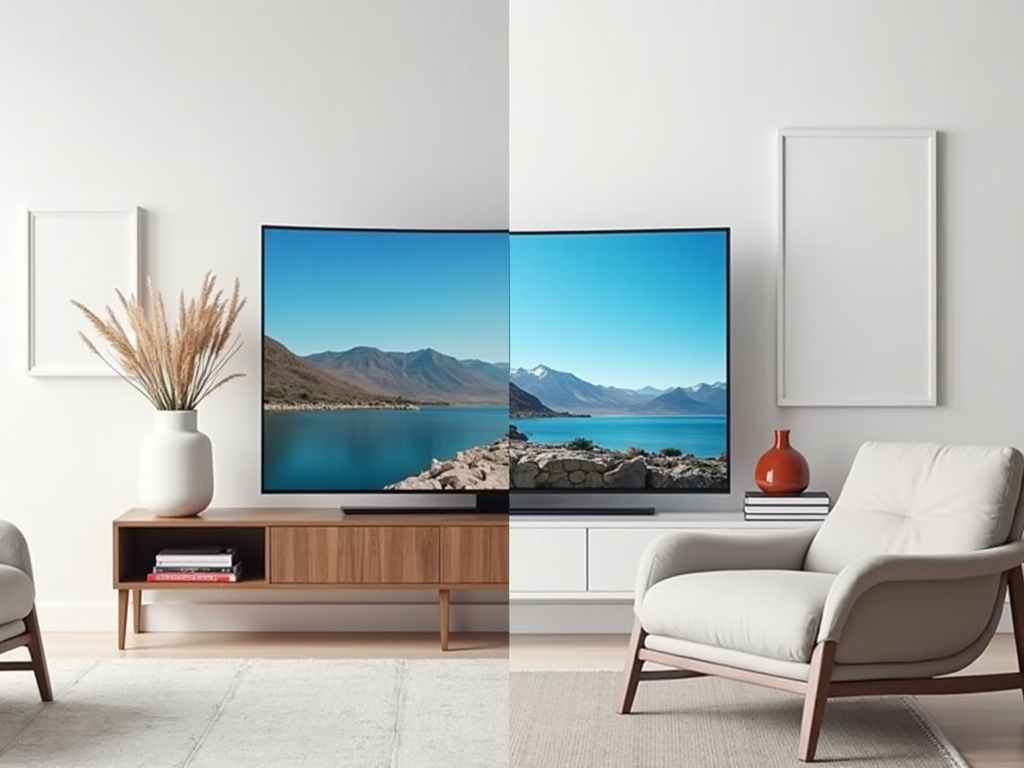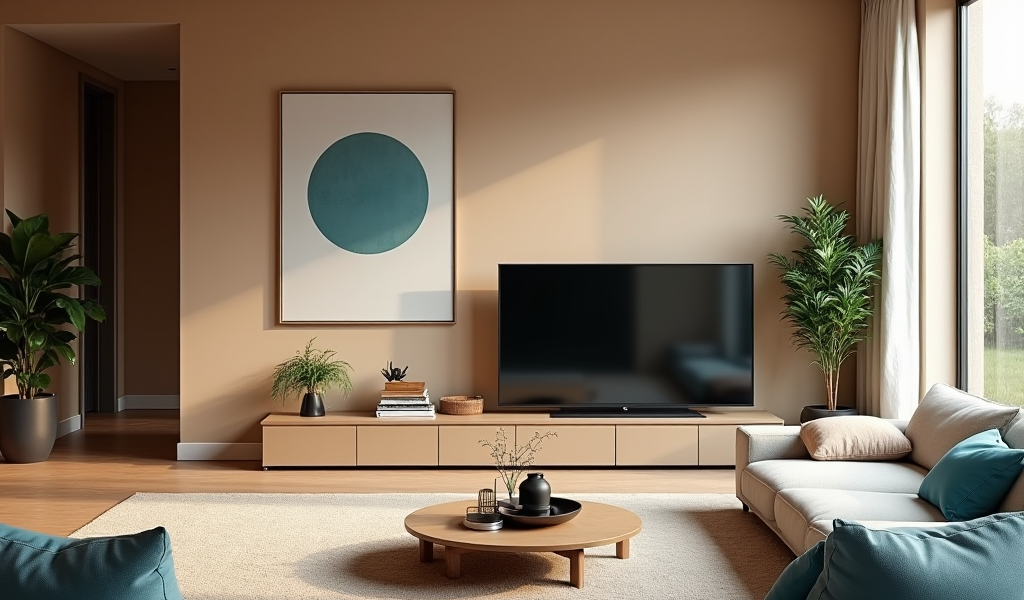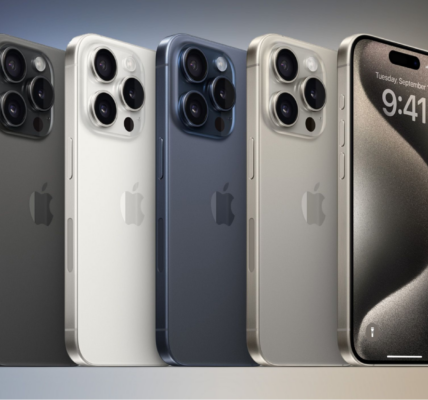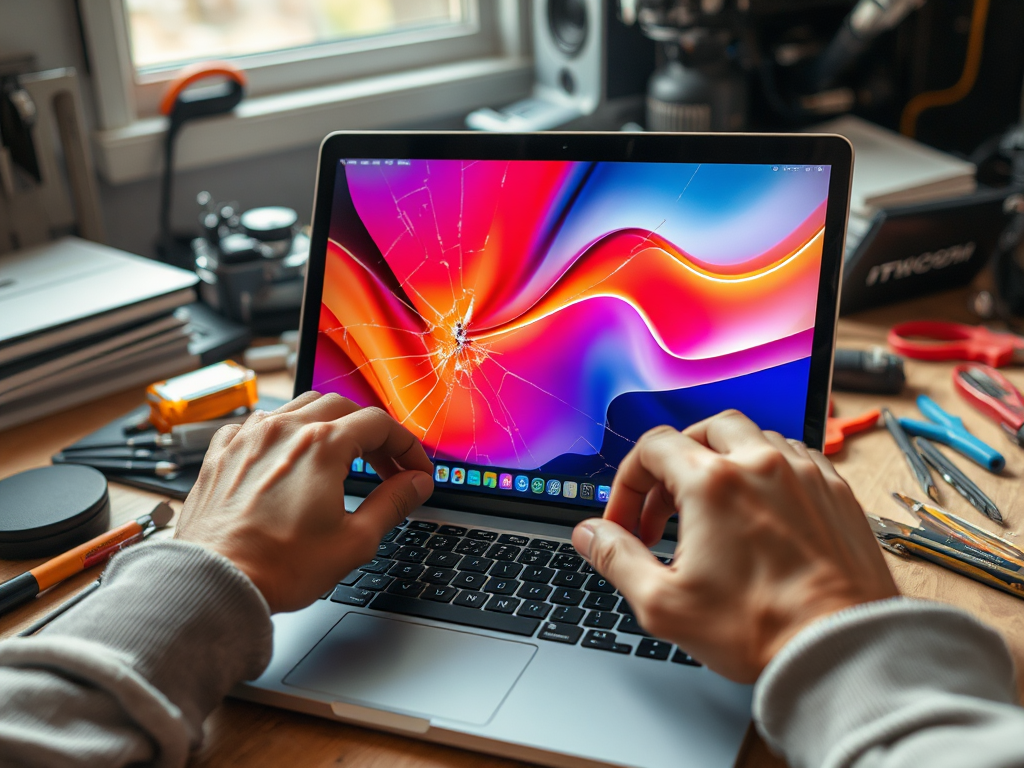The world of television technology has evolved at an unprecedented pace, leading observers to weigh the benefits of various formats against each other. Among the most debated subjects are curved and flat TVs, sparking passionate discussions among enthusiasts. Curved televisions stand out due to their distinctive design, promising an enhanced immersive experience. Flat screens, however, have long been the norm and continue to dominate the market due to their versatility and practicality. This article will delve deep into the differences between these two types of TVs, considering viewer preferences, performance, and practicality to help you make an informed choice. In the modern landscape, choosing the right TV is not just about style; it’s also about how your viewing experience can be optimized for your unique lifestyle and environment.
Understanding Curved and Flat TVs

Flat TVs, as the name suggests, feature a flat panel display that has become the industry standard. They offer a wide range of sizes and features tailored to personal preferences, making them suitable for various settings. On the contrary, curved TVs utilize a unique design that curves slightly around the viewer, creating a subtle dome effect. This curvature is intended to enhance the viewing experience by drawing the viewer in and presenting images in a slightly more immersive fashion. Both types of televisions leverage advanced technology, such as LED, OLED, and QLED displays, but differ significantly in how they project visuals and the viewer’s experience.
Here’s a quick look at how these types compare:
- Design: Curved TVs are designed to create a more immersive environment, while flat TVs are more traditional.
- Viewing Angles: Curved TVs generally offer better viewing angles for seated viewers, but flat TVs cater better to a larger audience.
- Cost: Curved TVs tend to be pricier, reflecting their more complex technology.
Advantages of Curved TVs

Curved TVs come with several advantages that make them a compelling option for certain viewers. One of the standout features is the immersive viewing experience they provide. The curvature enhances depth perception, making images appear more lifelike and engaging. This is particularly noticeable during action movies or gaming sessions, where sense of depth can elevate the entire experience. Additionally, these TVs feature enhanced viewing angles, which means that even if you’re sitting off to the side of the TV, visual distortions are minimized. This can lead to a more enjoyable experience when multiple people are watching together, especially in social settings.
The design of curved TVs also contributes to their aesthetic appeal in home décor. They can serve as a striking centerpiece, often becoming a conversation starter among guests. Their sleek appearance tends to complement modern interior designs, offering a unique visual impact that flat TVs may lack. Furthermore, their futuristic silhouette can make a room feel more cutting-edge, which is particularly attractive to tech enthusiasts and early adopters.
Advantages of Flat TVs
Flat TVs offer a variety of advantages that appeal to a broad audience, primarily due to their versatility in placement. Whether you intend to mount your TV on the wall or place it on a console, flat screens adapt easily without compromising the integrity of the display. This ensures that you can position your TV as you see fit, without worrying about specific room setups or seating arrangements. Moreover, flat TVs are often more cost-effective than their curved counterparts. They are available at a range of price points, making it easier to find one that suits your budget without sacrificing essential features.
Another significant advantage of flat TVs is their reduced glare and reflections. The surface of a flat panel is less likely to catch reflections from surrounding light sources, allowing for a clearer picture in brightly lit rooms. This attribute is beneficial in homes with windows or other light reflections, where picture quality can be severely impacted by glare. In such settings, flat TVs provide a more consistent viewing experience for users.
Comparing Visual Quality
When it comes to visual quality, both curved and flat TVs present unique characteristics. Curved designs can enhance depth perception and immersion, but they may not always dominate in picture clarity. Flat TVs, meanwhile, tend to maintain consistent image quality regardless of the viewer’s position, which can be a significant consideration for larger spaces. Color accuracy and contrast can also differ; for instance, curvature can sometimes distort color perception towards the edges of the screen.
| Feature | Curved TVs | Flat TVs |
|---|---|---|
| Viewing Experience | Immersive and enhanced depth | Consistent, no matter the angle |
| Design Appeal | Modern and aesthetically pleasing | Classic, versatile design |
| Price Range | Generally higher | More budget-friendly options |
Conclusion
In summary, both curved and flat TVs hold distinct advantages, making them suitable for different viewers and environments. Curved TVs excel in providing an immersive experience, appealing design, and enhanced viewing angles, ideal for dedicated movie watchers and gamers. Flat TVs, on the other hand, offer unrivaled practicality, excellent value for money, and versatility in placement, making them a go-to choice for broader groups of viewers. Ultimately, your choice should depend on your individual preferences, room setup, and budget considerations. The differences between these two types of TVs should guide you in finding the right model that enhances your viewing experience.
Frequently Asked Questions
- Are curved TVs better for gaming? Curved TVs can provide a more immersive gaming experience due to the enhanced depth perception and wider viewing angles.
- Can I wall-mount a curved TV? Yes, curved TVs can be wall-mounted, but it’s essential to consider the size and curvature when selecting the mount.
- Are curved TVs more expensive than flat TVs? Generally, curved TVs tend to be more expensive due to their unique technology and design, but prices vary based on model and brand.
- Do curved TVs reduce eye strain? Some users report less eye strain with curved TVs due to improved viewing angles and comfort, but this can vary by individual preference.
- Which type is better for larger rooms? Flat TVs are often recommended for larger rooms, as they can be viewed clearly from more angles and distances compared to curved models.









